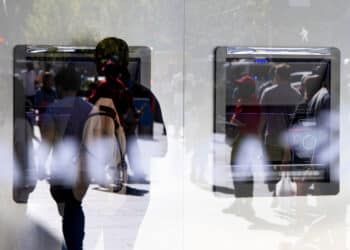What Lenders Can Learn From Retailers
There is a fascinating story from the New York Times that shows the lengths that retailers will go to learn the secrets and habits of consumers. The author of the article details how Target developed a formula to identify when women were likely to be pregnant, which in the world of retailing, is a huge moment of opportunity. Pregnant families are very likely to change their buying habits as they adjust to preparing for and having a baby. If a retailer can induce a family to change its habits and start shopping at a particular store when a woman is pregnant, then the family is likely to establish the habit of shopping at the store for a long time.
For retailers, sending consumers the right offer at the right time is a billion-dollar business.
A pair of researchers at Cornell University recently analyzed 500 million Twitter messages to determine when people were the happiest. The answer? Early in the morning.
What do these two articles have in common? More importantly, what do they have to with auto finance? Targeting consumers with a coupon for a crib when they find out that a baby is on the way is being in the right place at the right time with the right offer.
For a person looking to buy a car, when is the right place, the right time, and the right offer that auto lenders should provide? Should lenders wait until a consumer is in the dealership ready to make a purchase? Should lenders put their faith and efforts in persuading salesmen or F&I managers to recommend their products? Should the offer come as soon as a consumer visits a website looking for a vehicle?
Target used a group of products to predict whether a woman was pregnant. What are the products that indicate whether a consumer is ready to seriously consider a car loan offer?
We talked recently about the value in data, whether for a lender analyzing it or a borrower trying to monetize it. What interests me the most with respect to this topic is this: How wide is the window for lenders? How long do they have once a consumer has decided to buy a new or used car? Is it a day? A week? An hour? How close can you get to pinpointing the exact moment when it’s the right time to put an offer in front of a borrower?
Target worried that women would become curious as to how the retailer knew they were pregnant, so the company included offers for lawnmowers and other non-pregnancy items to throw women off the scent. But the ads were still incredibly effective.
Should lenders be targeting borrowers in the morning, because that’s when they are at their most pleasant?
There is a fascinating story from the New York Times that shows the lengths that retailers will go to learn the secrets and habits of consumers. The author of the article details how Target developed a formula to identify when women were likely to be pregnant, which in the world of retailing, is a huge moment of opportunity. Pregnant families are very likely to change their buying habits as they adjust to preparing for and having a baby. If a retailer can induce a family to change its habits and start shopping at a particular store when a woman is pregnant, then the family is likely to establish the habit of shopping at the store for a long time.
For retailers, sending consumers the right offer at the right time is a billion-dollar business.
A pair of researchers at Cornell University recently analyzed 500 million Twitter messages to determine when people were the happiest. The answer? Early in the morning.
What do these two articles have in common? More importantly, what do they have to with auto finance? Targeting consumers with a coupon for a crib when they find out that a baby is on the way is being in the right place at the right time with the right offer.
For a person looking to buy a car, when is the right place, the right time, and the right offer that auto lenders should provide? Should lenders wait until a consumer is in the dealership ready to make a purchase? Should lenders put their faith and efforts in persuading salesmen or F&I managers to recommend their products? Should the offer come as soon as a consumer visits a website looking for a vehicle?
Target used a group of products to predict whether a woman was pregnant. What are the products that indicate whether a consumer is ready to seriously consider a car loan offer?
We talked recently about the value in data, whether for a lender analyzing it or a borrower trying to monetize it. What interests me the most with respect to this topic is this: How wide is the window for lenders? How long do they have once a consumer has decided to buy a new or used car? Is it a day? A week? An hour? How close can you get to pinpointing the exact moment when it’s the right time to put an offer in front of a borrower?
Target worried that women would become curious as to how the retailer knew they were pregnant, so the company included offers for lawnmowers and other non-pregnancy items to throw women off the scent. But the ads were still incredibly effective.
Should lenders be targeting borrowers in the morning, because that’s when they are at their most pleasant?















